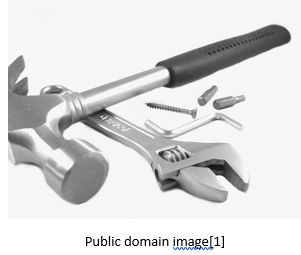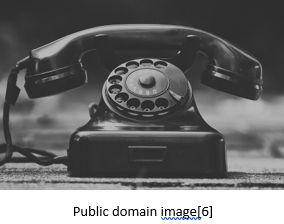Genetic Genealogy (part 3): Tools and Tips
 8
8Jan

Genetic genealogy is labor-intensive. It is easy to spend hours on individual steps like sorting and clustering matches and building family trees with little to no starting information. Here are some tools and tips for anybody working with their DNA for genealogical reasons.
Genetic Genealogy Part 3: Tools and Tips
Clustering DNA Matches
No matter which DNA test you take, clustering your DNA matches is a must in order to solve most genealogical problems. Clustering, in relation to DNA matches, means grouping the matches based on how they connect to your ancestral lines. For example, you could group your DNA matches according to grandparent. You might take your closest twenty matches and cluster them to find out that nine matches are related to you on your paternal grandfather’s side, six matches are related on your paternal grandmother’s side, three matches are related to you on your maternal grandfather’s side, and two matches on your maternal grandmother’s side. This can be very useful later when trying to figure out how a new or unknown match is related. It is also helpful if there is an unknown ancestor on one particular ancestral line (see how clustering helps narrow down the relevant matches in the hypothetical case study at the end of the first post in this series).
Leeds Method for Clustering DNA Matches
The Leeds method is the manual process of clustering. You list the usernames of all your estimated 2nd and 3rd cousins (the DNA company estimates these relationships for you) on an excel sheet with the amount of shared centimorgans. Then, you start with the first match on your list and see which DNA matches you have in common with them. Every match in that first group is assigned a color. Then, you move on to the next DNA match in your list without an assigned color and look at your shared matches. All of that group is assigned a different color. Continue with this process until every match has a color.
The trickiest part of clustering is interpretation. You do not always end up with four perfectly divided groups representing each grandparent’s side. Dana Leeds’ website has some useful tips for interpreting the various clusters that could result from using her clustering method.[2]
AutoCluster
Evert-Jan Blom of GeneticAffairs.com pioneered the AutoCluster. The AutoCluster can be used instead of the manual method to group DNA matches together. The end result is a grid of DNA matches with colored squares representing groups of people who descend from a common ancestor. The tool does not do the interpretation for you, but it is a different way to approach the clustering process.
AutoClustering can be done on the Genetic Affairs website with tests from 23andMe and FamilyTreeDNA. MyHeritage and GEDmatch provide the tool in-house on their databases. Currently, Ancestry tests are not compatible with the AutoCluster tool, but raw DNA results from an Ancestry test can be uploaded to a website like MyHeritage and the tool can be used there.
Genetic Affairs offers a free trial, so a number of AutoClusters can be completed for free on that website. Genetic Affairs also has a manual for their website and tools.[3]
DNA Painter: What Are The Odds?
One of the most challenging DNA problems is unknown parentage. Whether it is an adoption case or some other form of unknown parentage, there are several labor-intensive steps. DNA Painter’s What Are The Odds (WATO) tool can help with the last and most important step. Take the example of an unknown biological grandfather. After clustering DNA matches, hopefully you have a list of DNA matches that are specifically related to you on your unknown grandfather’s side. The next step is to build the matches’ trees back in time until a common ancestor is found. The last step is to build the common ancestor’s tree down until you find the probable identity of your unknown grandfather (see hypothetical case study from the first post of this series). If, for instance, all the matches have a common ancestor who is the grandfather or great-grandfather of your unknown grandfather, then you will have to find all the grandchildren and great-grandchildren of the common ancestor and try to narrow down which one would be your unknown grandfather.
With the WATO tool, you enter the identified common ancestor between your unknown relative and related DNA matches. Then, you include all the descendants of the common ancestor, including the DNA matches and their amount of shared centimorgans. The tool then allows you to test the probability of a certain person being your unknown relative. Let’s say that you have narrowed down your unknown grandfather to one of five men. Your biological grandfather could either be one of three brothers or one of two male cousins. You can select one of those men in the WATO tool and see the odds of that man being your biological grandfather. The odds are calculated from the shared centimorgans of the DNA matches that you input. So, the more DNA matches input that are related to the unknown relative, the better prediction you will get from the tool.
Chromosome Mapping
One of the many exciting possibilities with DNA is the ability to map out your DNA inheritance. Using the shared segment information from your DNA matches, you can identify which parts of your DNA come from different ancestors. For example, if you share a 32-centimorgan segment of DNA with a 2nd cousin (same set of great-grandparents), then you can know that this piece of DNA came from those great-grandparents, through your grandparent on that line, to your parent and to you. With enough DNA matches, you could theoretically map out which parts of each chromosome came from each ancestor. See the hypothetical example below for one of twenty-two-and-a-half pairs of chromosomes.

This can be a very time-consuming process and it is difficult to fully complete. The Chromosome Mapping tool on DNA Painter is the ideal way to get started. The tool requires you to input segment information and then label it. The segment information can be retrieved from most DNA test databases. The only exception is Ancestry. AncestryDNA does not have a way for you to see detailed segment information.
DNAPainter.com has guides and videos to help with using all of their tools.[5]
Tips for Contacting a DNA Relative

One of the inevitabilities of genetic genealogy is contacting DNA matches for family information. Making contact with a random person can be intimidating regardless of the situation. So, here are some tips for making contact with DNA relatives.
- Message through the DNA database system first. By signing up for a DNA test, the person has already consented, in a way, to being contacted through that website. They are far more likely to respond through the system than anywhere else. It is often easy to find a phone number, address, or email, however people are used to ignoring communications on those platforms. In my experience, you might consider finding and contacting the person through social media. Personally, I get far fewer scam and soliciting communications on Facebook than I get on email and phone calls.
- Draft a couple versions of what you want to say and how you want to say it. Nobody is perfectly smooth and pleasant on a first attempt. Practicing what you want to say or write can be a good way to weed out the awkwardness. However, do not endlessly edit what you want to say or write. It will never be perfect, so sometimes just hitting send after a couple edits can be the best thing for any extreme anxiety you might be feeling.
- Be empathetic, be ready for failure. In our world of scams and endless soliciting calls, it is no wonder that someone would be hesitant to talk or communicate over email with a stranger, let alone share personal family information with them.
- Be kind in all responses, even if they are a rejection. Some people do not do well under pressure, so they may say no to you, just to avoid the pressure of deciding right there and then. With time, someone who has said no may come back and be willing to communicate and share information.
- Do not overshare details. People underestimate how much personal information is public record and how easy it is to learn about someone. If you share too much of what you know, the person may get freaked out. For example, if you are asking about the identity of someone’s deceased grandparent so you can start building a tree and find a common ancestor and you tell that person that you already know the names and birthdates of their parents and siblings, it is easy to see how that would alarm someone. It may be a good idea to leave out what you know about siblings, birthdates, and parents and simply ask for information about their one parent and grandparent.
- Do not undershare details. Scams are notorious for using vague information. Try to be direct and clear about what you want without being intimidating. The other key to getting a response is making the person curious enough to respond, so do not strip your communications completely of the mystery of your research question.
Test a Parent or Grandparent
Autosomal DNA (which is what most DNA companies test) only goes back 5-7 generations before becoming unreliable. Therefore, if you have a question on your father’s side, it would be better to test him or one of his parents. Doing this will give you an extra generation or two of reliable DNA matches.
Y and Mitochondrial DNA tests only test direct paternal and maternal lines. So, if you have a question on your mother’s direct maternal line and you are male, you will want to have your mother or maternal grandmother tested. Carefully think about which relatives you may want to ask to do DNA tests. They should not be forced or bullied, but be sure to explain the value and what information might be lost if they chose not to test. As always, be respectful now in case they change their mind later.
-Forrest
[1] https://pixabay.com/photos/tools-hammer-wrench-screw-nails-15539/
[2] https://www.danaleeds.com/dna-color-clustering-the-leeds-method-for-easily-visualizing-matches/
[3] https://geneticaffairs.com/images/Manual_Genetic_Affairs.pdf
[4] Model created by Forrest Emmett
[5] https://dnapainter.com/help
[6] https://pixabay.com/photos/phone-old-year-built-1955-bakelite-3594206/
Have you done any genetic genealogy work? Let me know in a comment below!
